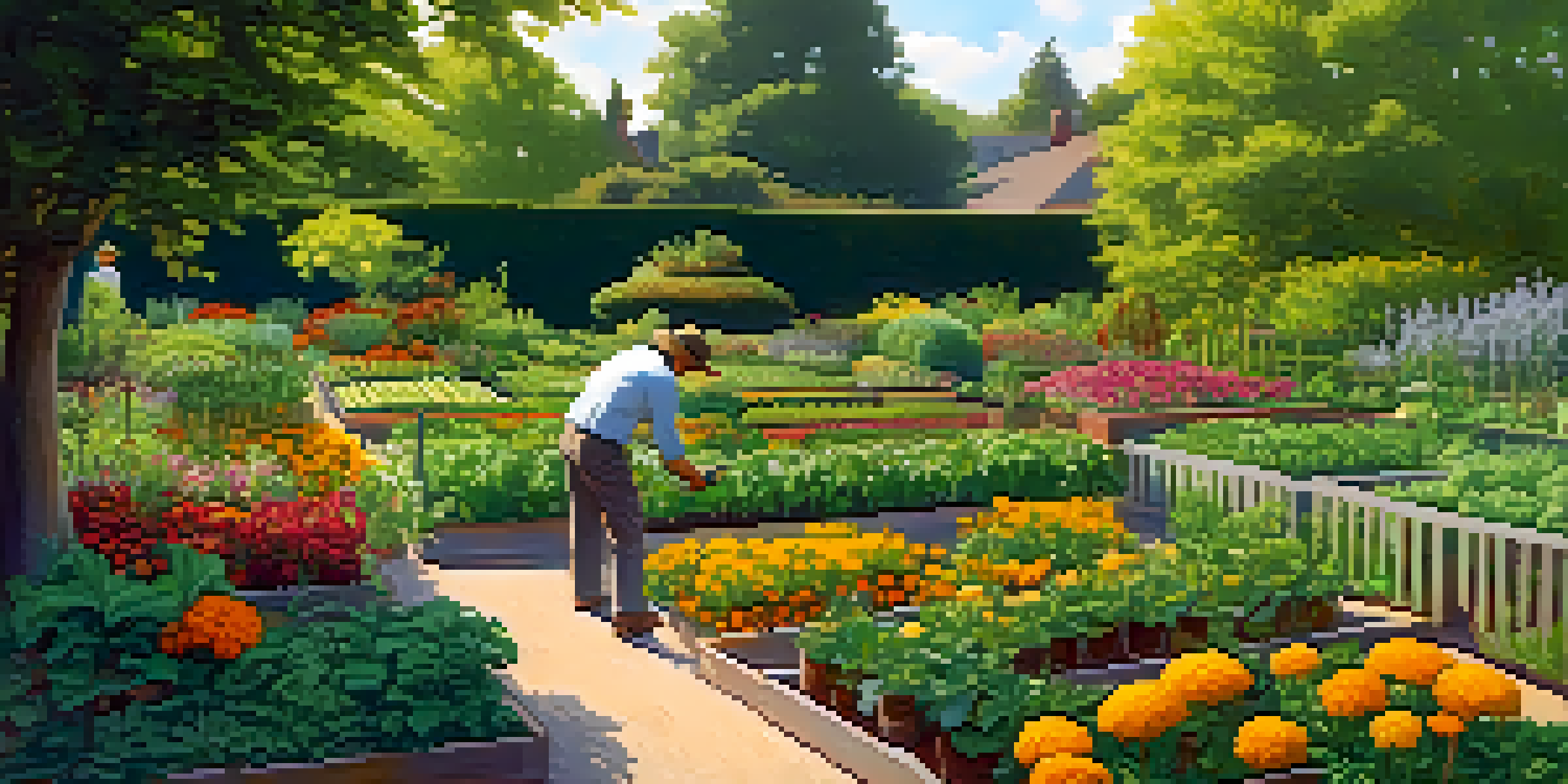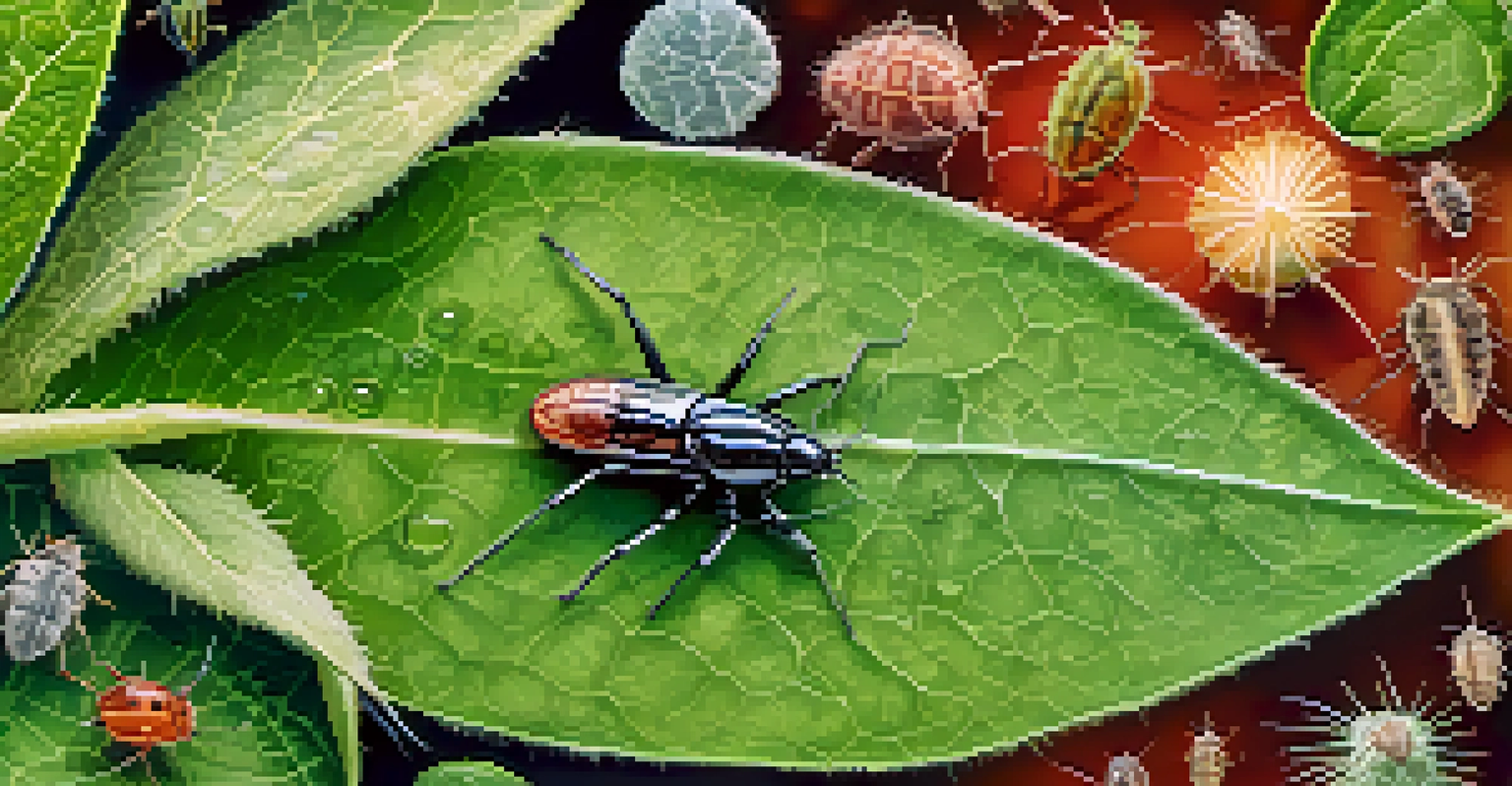Common Plant Pests and How to Manage Them Effectively

Understanding Common Plant Pests in Your Garden
Plant pests can be a gardener's worst nightmare, but understanding them is the first step in managing their impact. Common pests include aphids, spider mites, and whiteflies, all of which can wreak havoc on your plants. Each pest has its unique characteristics, which makes identification crucial for effective management.
The greatest threat to our planet is the belief that someone else will save it.
For instance, aphids are tiny, soft-bodied insects that often cluster on new growth, while spider mites are nearly invisible and create fine webs. By observing your plants regularly, you can catch these pests early before they multiply. Knowing what to look for can save your garden from significant damage.
Related Resource
Armed with this knowledge, you can take proactive steps to protect your plants. Whether you’re a seasoned gardener or just starting out, familiarizing yourself with these common pests will empower you to act swiftly when needed.
Signs of Infestation: What to Look For
Recognizing signs of pest infestation is vital to safeguarding your garden. Look for discolored leaves, webbing, or tiny holes that could indicate a pest problem. Insects like aphids can cause leaves to curl or distort, while whiteflies leave a sticky residue known as honeydew on plants.

Additionally, keep an eye out for ants, as they often farm aphids for their honeydew. This relationship can exacerbate the pest problem, as ants protect aphids from their natural predators. Regular inspections will help you catch these signs early and take action.
Identify Common Garden Pests
Understanding pests like aphids and spider mites is essential for effective garden management.
Being vigilant is key. The sooner you notice unusual changes in your plants, the easier it will be to manage the situation before it escalates into a full-blown infestation.
Natural Predators: Allies in Pest Management
One of the best ways to manage pests is by utilizing natural predators. Beneficial insects like ladybugs and lacewings feed on common pests like aphids and mites, helping to keep their populations in check. By creating a welcoming environment for these allies, you can reduce pest numbers organically.
Nature does not hurry, yet everything is accomplished.
Planting flowers that attract these beneficial insects, such as marigolds and dill, can enhance your garden's natural defenses. Additionally, avoiding broad-spectrum pesticides will help protect these helpful insects from harm. The balance of nature can be a powerful tool in your pest management strategy.
Related Resource
Incorporating natural predators not only helps control pests but also promotes a healthy ecosystem in your garden. This approach is sustainable and often more effective in the long run than chemical treatments.
Cultural Practices to Prevent Pests
Adopting sound cultural practices can significantly reduce the likelihood of pest infestations. Start by rotating your crops each season to disrupt pest life cycles. This practice minimizes the chances of pests becoming established in your garden.
Additionally, maintaining healthy soil through composting and mulching strengthens your plants, making them more resilient to pest attacks. Healthy plants are better equipped to fend off pests naturally, reducing the need for interventions.
Leverage Natural Predators
Encouraging beneficial insects such as ladybugs can help control pest populations organically.
Regularly cleaning your garden and removing debris can also eliminate potential pest hiding spots. By incorporating these practices, you create an environment that is less hospitable to pests.
DIY Solutions: Homemade Remedies for Pest Control
If you prefer a hands-on approach, DIY pest control solutions can be effective. Simple mixtures like soap and water can help tackle aphids by suffocating them when sprayed directly on the plants. Another popular remedy is a garlic or chili pepper spray, which can deter a variety of pests.
Creating these homemade solutions not only saves money but also allows you to use natural ingredients. Just be sure to test any spray on a small part of the plant first to ensure it won’t cause damage. These remedies can be a great alternative to chemical pesticides.
Related Resource
Remember, consistency is key. Regular applications of these DIY solutions can help keep pests at bay and foster a healthier garden environment.
Chemical Controls: When to Use Them Wisely
While natural methods are often preferable, there are times when chemical controls might be necessary. If you face a severe infestation that threatens your plants, targeted chemical treatments can provide immediate relief. However, it's essential to choose pesticides that are specific to the pests you’re targeting to minimize harm to beneficial insects.
Always follow the instructions on the label carefully, and consider applying treatments during the evening when beneficial insects are less active. This approach helps reduce the impact on your garden's ecosystem. Remember, using chemicals should be a last resort, not your first line of defense.
Implement Preventive Practices
Cultural practices like crop rotation and maintaining healthy soil can significantly reduce pest infestations.
By integrating chemical controls with natural methods, you can strike a balance that protects your plants while minimizing environmental impact.
Monitoring and Maintenance: Keeping Pests at Bay
Ongoing monitoring and maintenance are crucial for effective pest management. Set aside some time each week to inspect your plants, looking for any signs of pests or disease. This regular checking enables you to catch issues early before they escalate.
Additionally, maintaining a clean garden by removing dead plants and debris can help prevent pests from finding a suitable habitat. Regularly pruning plants can also improve airflow, reducing the chances of fungal infections that can attract pests.

By staying proactive and attentive, you’ll create a thriving garden that’s less susceptible to pests. Remember, a little vigilance goes a long way in ensuring your plants remain healthy and vibrant.